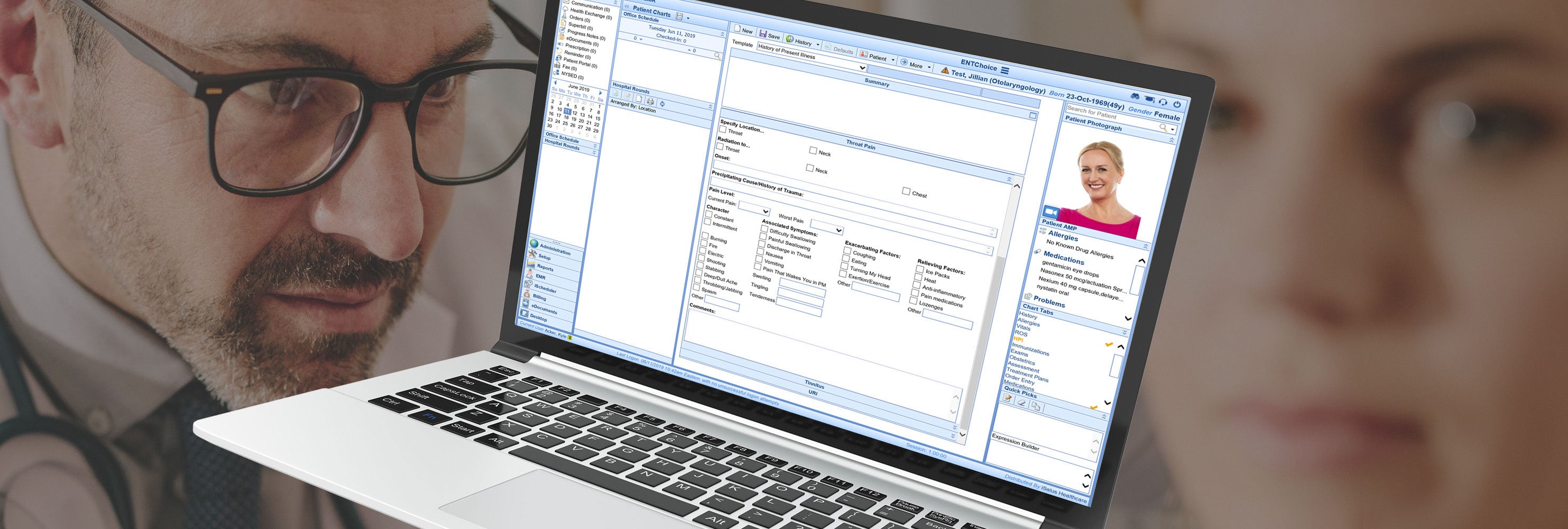
Vital Features You Need in Your ENT Software
Otolaryngologists need specialty-specific ENT software for their practice. In 2023, a &...
February 10, 2020
Your Otolaryngology practice has more facets than many realize. Many software providers fail to comprehend and execute quality technology that will help your complex practice run the way it needs to. Otolaryngologists work with audiologists and physical therapists routinely and need an ENT EHR that will bend and mold to the uniqueness of your individual practice while also working in tandem with other specialists. How can you weed out software providers who do not offer what you need and find an ENT EHR that will support the needs of your entire staff?
Look for These ENT EHR Features
1) Customizable Options
Your specialty is different from the rest, meaning the resources you use on a day-to-day basis differ from those of other specialists. If this is the case, then why are some software vendors trying to sell your practice sub-par, one-size-fits-all software? Your practice needs a customizable ENT EHR that will adjust and adhere to the shape of your staff. Fit with customizable templates, custom dashboards, and custom work-order sets, an ENT EHR should mimic your practice needs. Templates empower your physicians to document and chart in a way that helps them work at their best pace without sacrificing data integrity. Custom dashboards empower the individual to click through information however it makes sense to them. And custom work-order sets enable the provider to save time and return it to the patient.
2) Integrated Solution
Your ENT EHR should function as more than just an electronic health record. With an integrated ENT EHR solution, providers can file a claim, message patients, order prescriptions, and schedule appointments all with a single log-in. Integrated solutions enable a smoother transition between departments that result in a more efficient and accurate workflow. Your software vendor should offer a fully integrated ENT EHR that functions in tandem with your billing and practice management software without charging an arm and a leg for these necessary features.
3) Interoperability
Interoperability and integration are often mistaken for the same definition when they are extremely different. An integrated solution is a software that works in connection with the other software within your practice. An interoperable solution takes it in a different direction, enabling providers from different practices to securely share patient data. An interoperable ENT EHR enables an Otolaryngologist to exchange data with the audiologist or physical therapist that the patient is seeing in hopes of having the most accurate patient health information across the board. This way, providers can work together to determine the best route of care for the patient while decreasing duplicate testing or prescriptions. In the past, each specialist had to rely on the word of the patient to relay this information or request their chart from the other provider, which could take weeks. An interoperable solution empowers quick data exchange to best help the patient.
4) Secure Communications
In any situation where multiple specialists are working together or you rely on your staff for many of your workflow needs, secure communication tools are critical. Otolaryngologists often find themselves in this situation, communicating with audiologists or physical therapists, or even reaching out to their staff for help. Your ENT EHR should offer secure mobile communications, allowing a provider to send secure messages from a mobile device or even view patient health information. Mobile communication that does not risk the patient’s data or the integrity of your practice is hard to find. Ask your ENT EHR software partner if they offer a HIPAA compliant mobile solution.
Your Otolaryngology practice is complex, and your staff needs software that will help them work at their best pace, delivering their best work. To learn more about an ENT EHR that can help you, click here.